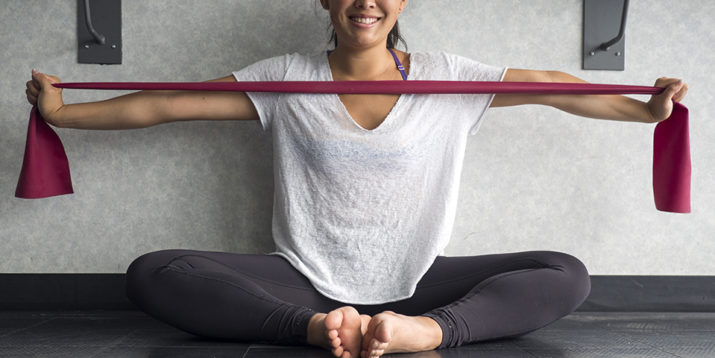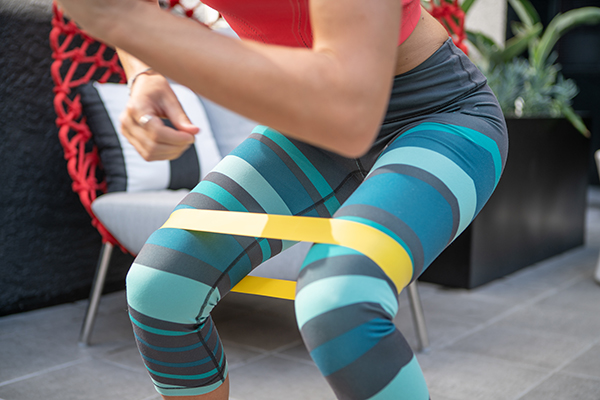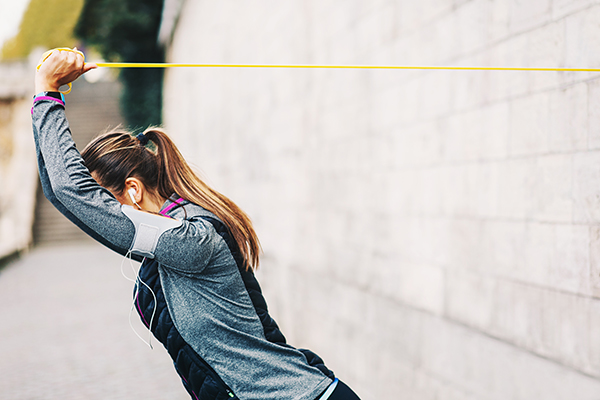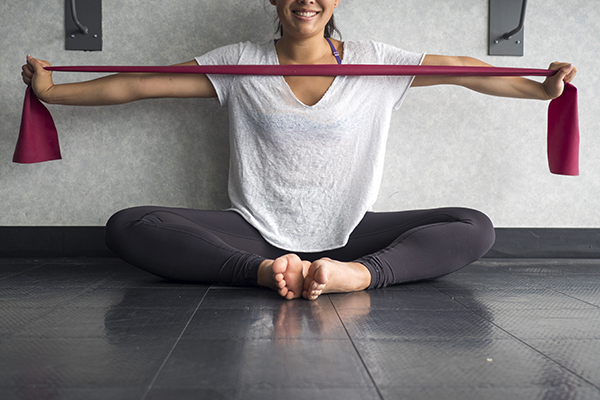How to Use Resistance Bands for Real Results

If you want a workout that’s cheap, portable, versatile, and effective, learn how to use resistance bands.
When you know how to use them, you can easily simulate your favorite barbell lifts and dumbbell workouts anywhere, anytime.
You can also use resistance bands to make bodyweight movements more complex and challenging.
But before mastering how to use resistance bands, it’s important to understand how they work.
Bands come in various shapes and sizes: small loops (a.k.a., “booty bands”), large loops, tube-shaped bands with handles, and flat bands, which are typically used in a physical therapy setting.
Generally speaking, the thicker the band, the “heavier” it is.
Choosing the appropriate resistance band depends on your desired level of difficulty and the required range of motion for each movement.
Pro tip: Get even more out of your resistance bands with a Control Track. Learn more about this unique piece of equipment and how to use it with 9 Week Control Freak with Autumn Calabrese.

How to Use Resistance Bands for Legs
One of the simplest ways to use resistance bands for leg workouts is to loop a small band around both legs, says Gabrielle Bolin, certified personal trainer.
“For example, loop a band around the legs right above the knees and do lateral shuffles,” she says.
Using a resistance band to create tension between the legs further engages the hips, glutes, and thighs.
The same technique can be applied to lower-body movements like squats, knee raises, and glute bridges.
You can also use larger resistance bands — with or without handles — to perform lower-body movements typically done with dumbbells and barbells.
To add resistance to a squat, for example, use both feet to step on one end of the band while looping the other end over your head and across your shoulders.
If your resistance band has handles, step onto the middle of the band and hold the handles in front of your shoulders.

How to Use Resistance Bands for Arms
Wondering how to use resistance bands for arm exercises? Try anchoring your bands, suggests Saara Haapanen, M.S., a certified personal trainer and sports psychology Ph.D. candidate based in Denver.
“If you have bands with handles, you can anchor the handle in a door,” she says. “I also like to loop one handle through the other around something stable. I do this a lot at the park, using a park bench as the anchor.”
With a high anchor (e.g., the top of a door frame), you can add resistance to moves like triceps pull-downs.
With a low anchor (e.g., the base of a park bench), you can simulate biceps curls.
Alternatively, you can use resistance bands for arms exercises by anchoring the band with your feet or gripping either end of a small loop.
(Think pull-aparts, triceps kick-backs, and overhead presses.)
How to Use Resistance Bands for Abs
If you know how to use these for the legs and arms, you know how to use resistance bands for abs exercises; the basic techniques — anchoring and creating tension between body parts — are the same.
You can increase the difficulty of a classic ab exercise like bicycle crunches by looping a small band across the laces of your shoes.
“It takes strength and control to push and pull the band in both directions without letting it pull the feet back together, creating massive time under tension and great added resistance to an already effective move,” says Bolin.
You can also use resistance bands for abs exercises by anchoring one end of a large band with your feet or an immovable structure, explains certified personal trainer Michael Julom.
“Perform your Russian twists with a looped band anchored to your feet and held in both hands,” he suggests. “Or perform leg raises with a band anchored to the floor and looped around your ankles.”

How to Use Resistance Bands Safely
When using resistance bands, safety is paramount. Before each workout, inspect your resistance bands for rips, holes, and weak spots, as they could snap when you next use them.
Proper storage is crucial to maintaining the structural integrity of resistance bands, says Haapanen.
“Don’t keep your bands in the sun or in a hot vehicle for an extended period of time,” she advises.
Heat, as well as some chemicals in cleaning agents, can break down the material of resistance bands. So, when it comes to cleaning, opt for a damp cloth instead of soaps and sprays.
Additionally, the same rules regarding proper form and progression that you would use in any traditional weight room apply to resistance bands workouts, says Bolin.
“It’s important to remember that, while resistance bands look benign compared to things like heavy dumbbells or kettlebells, they can cause injuries, muscle tears, or strains when overused or used incorrectly,” she says.
